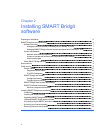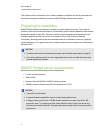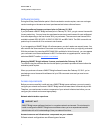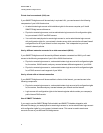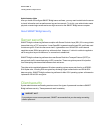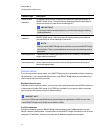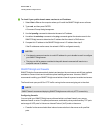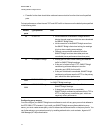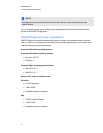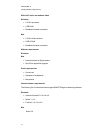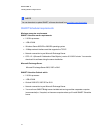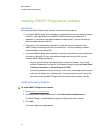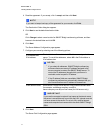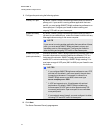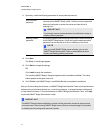
l Firewalls for the client should allow outbound communication from the client on all specified
ports.
For best performance, allow inbound TCP and UDP traffic to the server on the default ports specified
in the following table.
Default
ports
Type/protocol Use
80 TCP/HTTP l Initial connection to the SMARTBridgit server to
display the web page from which the users download
the SMARTBridgit client.
l Initial connection to the SMARTBridgit server from
the SMARTBridgit client when looking for meetings
to join or when creating new meetings.
l Fallback communication method for all other
SMARTBridgit functions when other ports are
unavailable (lower performance than other ports).
80 TCP/SMARTBridgit l Primary port for data, screen viewing and webcam
traffic for SMARTBridgit meetings.
l If this port is limited to only HTTP, SMARTBridgit
conferencing software attempts to use the
secondary port (9933) for this traffic.
l If this port is blocked or unavailable, SMARTBridgit
conferencing software uses the HTTP onthe primary
port, which can affect performance.
9933
TCP/SMARTBridgit Secondary port for data, screen viewing and webcam traffic
for SMARTBridgit meetings.
9901 to
9920
UDP/SMARTBridgit
l Primary port range for VoIP audio traffic for
SMARTBridgit meetings.
l If these ports are blocked or unavailable,
SMARTBridgit conferencing software falls to TCP or
HTTP onthe primary or secondary port, which can
negatively affect performance.
Configuring proxy servers
You can configure your SMARTBridgit server software to work with any proxy server that adheres to
the RFC 2068 HTTP standard. If you install your SMARTBridgit server software behind a proxy
server, you must create access policy rules for inbound and outbound traffic on that proxy server. You
can further enhance your network security by enabling authentication, such as basic, digest or NT
LAN Manager (NTLM) authentication.
C HA PT ER 2
InstallingSMARTBridgitsoftware
12




